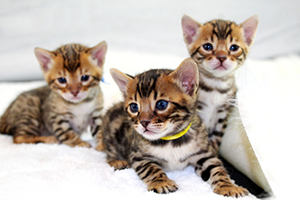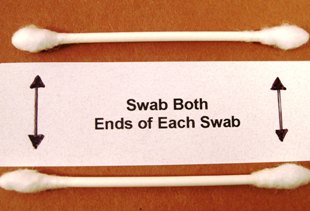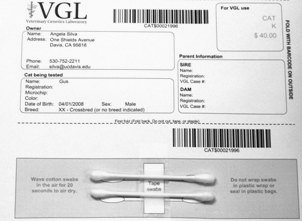Quick Summary
Click here for Price and Turnaround Time
Phenotype: In affected cats, uncoordinated eye movement is often observed, as well as owner-reported increased eye-shine (tapetal reflectivity) that occurs as thinning of the retina progresses. Onset of photoreceptor loss is around 5 weeks of age with severe loss by 16 weeks of age.
Mode of Inheritance: Autosomal recessive
Alleles: N = Normal, PRA = Progressive retinal atrophy (Persian derived)
Breeds appropriate for testing: Persian, British Longhair, British Shorthair, Himalayan, Exotic Longhair, Exotic Shorthair, Napoleon, and other Persian-derived breeds and crosses
Explanation of Results:
- Cats with N/N genotype will not have Persian-derived progressive retinal atrophy. They cannot transmit this Persian-derived PRA variant to their offspring.
- Cats with N/PRA genotype will not have Persian-derived progressive retinal atrophy, but are carriers. They will transmit this Persian-derived PRA variant to 50% of their offspring. Matings between two carriers are predicted to produce 25% kittens affected by Persian-derived progressive retinal atrophy.
- Cats with PRA/PRA genotype will have Persian-derived progressive retinal atrophy, a condition leading to blindness.
$44 one test per animal
$66 this test + PKD1 test
Cat DNA tests are carried out using cells brushed from your cat's cheeks and gums using household cotton swabs.
The cat DNA submission form with instructions and a place to tape the cotton swabs is sent to you via email after you place an order, and can be printed from your home computer. DNA test kits are no longer mailed.
Instructions
Step-By-Step:
1.
 Purchase regular household cotton swabs for cat DNA collection (the cotton swabs can be purchased at a pharmacy or drug store)
Purchase regular household cotton swabs for cat DNA collection (the cotton swabs can be purchased at a pharmacy or drug store)
2.

Make sure the cat has not had anything to eat or drink for at least 1 hour prior to collecting sample.
When swabbing kittens, isolate each kitten from the mother, littermates and any shared toys for 1 hour prior to swabbing. Kittens should not have nursed or eaten for 1 hour prior to collecting sample.
If collecting samples from more than one cat, make sure to sample one cat at a time and wash your hands before swabbing another cat.
3.
 Use both ends of the two cotton swabs for a total of four swabs.
Use both ends of the two cotton swabs for a total of four swabs.
4.
Place the cotton head of the swab between the cat’s gums and cheek and rub or rotate the swab back and forth for 15 seconds. Repeat with each cotton swab head, for a total of 4 swabs. We recommend swabbing a different area of the gums with each swab head.
5.
Wave the swab in the air for 10-15 seconds to air dry it before attaching it to the submission form.
6.
 After swabbing the cheek and gums, tape the cotton swabs to the bar-coded submission form printed from your MyVGL account.
After swabbing the cheek and gums, tape the cotton swabs to the bar-coded submission form printed from your MyVGL account.
ATTENTION:
- Do not collect saliva/drool – the key to obtaining a good sample is getting cheek cells on the swab.
- Do not rub swab on the cat’s tongue or teeth – this will result in poor quality sample.
- Do not collect a sample from a kitten that has recently nursed – the mother’s genetic material can rub off on the kitten’s mouth and contaminate the sample.
Persian cats have a form of severe progressive retinal atrophy (PRA-pd), also known as Leber's congenital amaurosis (LCA) in humans. The condition in cats is caused by a variant (E1:940445C>T) in the aryl-hydrocarbon interacting protein-like 1 (AIPL1) gene. The disease is inherited in an autosomal recessive fashion with both sexes being equally affected. Onset of photoreceptor loss is around 5 weeks of age with severe loss by 16 weeks of age. In affected cats, uncoordinated eye movement is often observed, as well as owner-reported increased eye-shine (tapetal reflectivity) as thinning of the retina progresses. Corneal thinning is not observed. Cats with one normal and one mutated gene (carriers) have Retinal Pigment Epithelium changes but maintain normal vision without photoreceptor loss. Mating between two carrier cats is expected to produce 25% blind kittens.
Research by Dr. B. Gandolfi in the laboratory of Dr. Leslie Lyons, University of Missouri, identified the mutation associated with PRA-pd. Testing for this PRA-pd variant assists owners and breeders in identifying affected and carrier cats.
